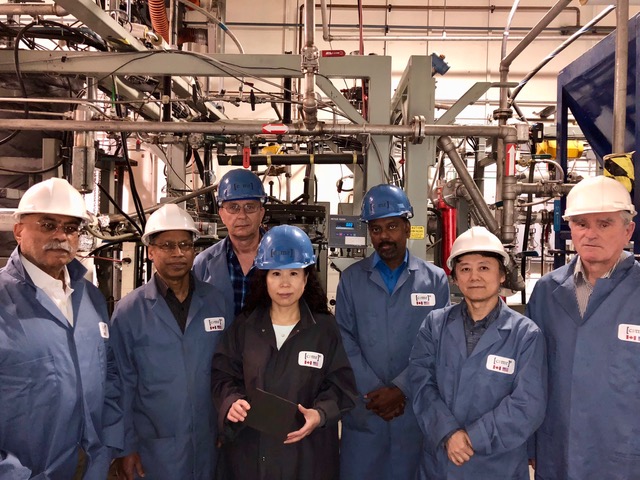The exceptional chemical, biological and physical characteristics of carbon-based nanomaterials have attracted the attention of scientists and large multinational corporations, specially those who are in the coal mining and oil refining businesses. As these industries face gradual decrease in demand, they are discovering that their raw materials they sell have much more value and multiple uses across many industries. Burining coal, oil and methane would be a waste of precious resources. Converting them to graphene, graphite and meryad other carbon-based products has become imperative.
The earlier scientific attempts in converting coal, CO2, CO, and methane were focused on the conversion of these elements to alternative fuels for use in automobiles, tar for use in construction of roads and buildings, and variety of lubricants used in machines and processing plants. The processing methods used were mostly based on gasification, liquefaction, and hydro-pyrolysis. However, the solution for dealing with Green House Gases (GHG) such as methane and CO2 has mainly been in sequestration of these harmful gases.
Today, however, the demand for the development of nanomaterials using environmentally friendly technologies has changed the nature of these processes and the form and use of the products that can be developed from CO2, CO, methane, and coal. Two of the new products that can be derived from these diverse sources are graphene and graphite. Graphene has over hundreds of uses as do graphite flakes. Many new industries have developed around these relatively new materials with spectacular scientific, industrial, and financial results. Their derivative businesses are growing exponentially in numbers, products, and various applications.
The cheapest and the most abundantly available sources of graphene and graphite in North America are coal and CO2. Burning coal and spewing CO2 are hazardous to our health but converting them to graphene and graphite and many of their derivative products has and continues to enhance our lives.
With graphene, we can now create a new class of two-dimensional materials with unique properties. Graphene transistors are substantially faster than silicon transistors and result in more efficient computers. Graphene is suitable for producing transparent touch screens, light panels, and solar cells. When mixed with plastics, graphene can turn plastics into conductors of electricity while making them more heat resistant and mechanically robust. Satellites, airplanes, and car parts are being manufactured out of these new carbon-based composite materials.
CVMR® is able to convert CO2, CO, methane, and coal to value-added carbon-based products for use in diverse industries. CVMR® has a proven track record and has won many accolades for its ability, technological knowhow, and patented proprietary processes for converting CO2, CO, and methane to graphene, graphite, , fire resistant panels, roofing materials, carbons suitable for 3D printable composites and many other highly sought-after carbon-based products.
These new nanomaterials have applications in the production of energy, biomedicine, aerospace, batteries, electronics, computers, and composite materials used in the aerospace, automotive, and defence industries.
At CVMR® we select the most economic combination of value-added products, based on the feed materials’ characteristics, market potential of the products and the potential for generating maximum revenue. A diverse portfolio when chosen carefully can mitigate the usual sales and marketing risks.
Technologies Used For The Conversion Of Coal
The predominant techniques employed currently to synthesize carbon-based nanomaterials are the following four methods:
- Thermal Plasma (which due to its high level of energy consumption is rather expensive);
- Arc Discharge methods;
- Laser Ablation; and
- Periphrastic Chemical Vapor Deposition or CVD, (This is one the processes often used by CVMR®).
The latter method, CVD, is based on a platform discovered some 110 years ago. It has been further developed and applied to the refining of 36 different metal concentrates by CVMR®. This organo-chemical-based process is a cost-effective refining method that has a proven record of over 110 years. The process has been expanded to apply to coal, CO2, CO, and methane as sources of inexpensive feed materials for the production of value added new carbon-based products.
Contaminants Found In Coal
One of the weaknesses in most conversion methods of coal is dealing with the difficulties associated with the metal contaminants in coal which affect the properties of carbon-based nanomaterials being produced. CVMR®’s vapour metallurgy process not only does not allow such contaminations, it can convert the metal contents of coal to metal powders and metal nano powders if such contaminants prove to exist in sufficient volumes and prove to be economically feasible to extract. The metal contaminants in coal can range from iron, nickel, molybdenum, copper, manganese, chromium, and many Rare Earth Elements (REE).
CO2 Capture & Its Conversion To Graphene And Graphite
CVMR®’s modular post-combustion carbon dioxide (CO2) scrubbers/CVD Conversion Units are capable of producing valuable graphite and graphene, based on CVMR®’s chemical vapour deposition (CVD) technology
CVMR®'s system relies on the CVD technique of reduction - oxidation reaction of CO2 with catalytic mineral materials. The process can generate a new source of revenue from the sale of graphite and graphene for emitters of Green House Gasses (“GHG”).
CVMR®’s CO2 capture and conversion method turns the liability of emitting GHG into a profitable business by generating revenue from the sale of graphene and graphite and other carbon-based products. CVMR® is also capable of assisting its clients in the marketing of their graphene and graphite.


